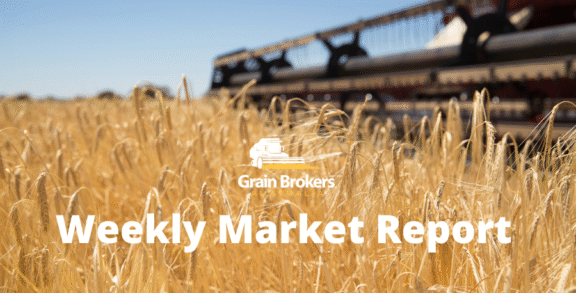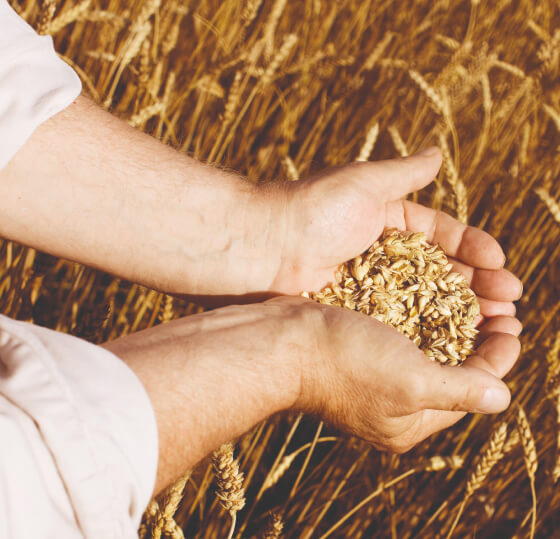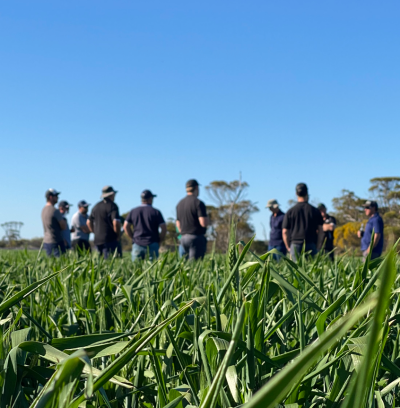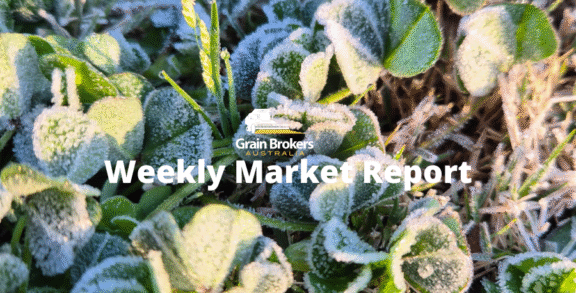
Wheat farmers across the US have made good harvest progress ahead of widespread rains that are expected to delay the campaign in most regions for the next ten days before drier weather is forecast to roll across the winter wheat belt late in July and into the first week of August.
To open last week, the United States Department of Agriculture’s official crop progress report put the winter wheat harvest at 63 per cent completed, up from 53 per cent a week earlier, on par with the five-year average of 64 per cent, but well behind the 70 per cent reaped on the same date last year. The USDA’s most recent winter wheat crop condition report was issued on July 7, with 48 per cent of the crop rated good-to-excellent, unchanged from late June but slightly lower than the 51 per cent recorded at the same time last year.
The hard red winter harvest was reportedly nearing the 40 per cent marker, with the annual crusade winding down in Texas, Oklahoma and Kansas as the focus moves further north. The Texas harvest added seven percentage points in the week to July 13, reaching 90 per cent compared to the five-year average of 97 per cent. In Oklahoma, the completion rate was 94 per cent against the five-year average of 99 per cent, while in Kansas, Colorado and Nebraska, those numbers were 93 and 88 per cent, 47 and 46 per cent, 35 and 43 per cent, respectively.
In Montana and the Pacific Northwest states of Idaho, Oregon and Washington, the winter wheat harvest is progressing well on the back of hot and dry weather. While average quality is expected, lower-than-average yields are anticipated due to persistent dry conditions throughout much of the growing season.
According to last Friday’s harvest update from US Wheat Associates, quality and yields continue to be variable, depending on environmental factors experienced throughout the quite capricious growing season. While yields in areas with adequate growing season soil moisture are expected to be higher and protein lower, areas with excessive moisture at harvest are seeing test weights and protein trend lower.
Sample testing last week revealed a slight downward trend in test weights, reflecting samples received from areas recently impacted by harvest rain. Last week’s mean was 78.9 kilograms per hectolitre compared to 80.7kg/hl in 2024 and an average over the past five harvests of 79.5kg/hl. Average protein content was 11.9 per cent when measured on a moisture basis of 12 per cent, the same as in 2024 but a full percentage point below the five-year average. At 357 seconds, the falling number results harvest-to-date are very similar to 2024, implying a sound crop thus far.
The soft red winter harvest was estimated to be 91 per cent completed as of July 13, which put it behind last year’s pace but ahead of the five-year average. Yields are reportedly averaging around 6.7 metric tonne per hectare through Illinois, Kentucky and Ohio, but many samples are exhibiting abnormally high vomitoxin levels due to a wetter-than-normal growing season in many eastern US states.
Results from last week’s US Wheat Associates testing put the mean grade thus far at SRW No 2. Protein averaged 9.5 per cent on a 12 per cent moisture basis, down from 9.8 per cent in 2024 but slightly above the five-year average of 9.4 per cent. The test weight of 77.1kg/hl is an improvement over the prior week but remains below last harvest and the five-year average, which were 78kg/hl and 78.4kg/hl, respectively. Falling number results also improved week-on-week to 298 seconds, but still lower than the five-year average of 320 seconds.
Spring wheat conditions were reported as 54 per cent good-to-excellent in last Monday’s USDA update, up slightly from 50 per cent a week earlier, but still well behind the 77 per cent rating at the same time in 2024. Around 78 per cent of the crop had thrown a head, up from 61 per cent in the July 6 report, and marginally ahead of the 75 per cent five-year average.
In last week’s global supply and demand update, the USDA pegged total US wheat production at 52.5 million metric tonne, slightly higher than the June forecast of 52.3MMT, but significantly lower than the 53.7MMT reaped in 2024. This is based on a projected harvest area of 14.8 million hectares, down from 15.1 million hectares in the June report and 15.6 million hectares in 2024. This implies an average yield across all wheat categories of 3.54MT/ha, compared to 3.47MT/ha in the June update and 3.45MT/ha last harvest.
Winter wheat production is forecast at 36.6MMT, down fractionally from 36.7MMT in 2024. A reduction in the harvested area from 10.6Mha to 10.0Mha is expected to be largely offset by a 4.8 per cent improvement in yield from 3.48MT/ha to 3.64MT/ha, the second highest on record.
Breaking it down by class, HRW output is estimated to total 20.5MMT, or 56.1 per cent of the winter crop harvest. With 9.2MMT or 25 per cent of the total, SRW is the second biggest winter wheat category, followed by soft white and hard white with 6.4MMT and 0.5MMT, respectively, or 17.4 per cent and 1.5 per cent of the total.
The current spring wheat production forecast, including durum wheat, is 15.9MMT, 6.2 per cent less than the 2024 crop of 16.9MMT, following a 4.5 per cent reduction in the harvested area to 4.8Mha, and a 1.8 per cent fall in the average yield estimate to 3.32MT/ha.
Excluding the relatively poor-yielding durum wheat from the equation, this season’s average yield forecast for the ‘other spring wheats’ is the second highest on record, behind the 2024 harvest. This lofty projection caught the market off guard, as the significantly poorer crop conditions this season do not support such an outcome.
Hard red spring dominates the spring wheat category with 12.8MMT, or 80.4 per cent of the total. Durum wheat runs a poor second on 2.2MMT, or 13.7 per cent of the output estimate. Soft white and hard white make up the balance on 0.7MMT and 0.2MMT, respectively, or just 4.7 per cent and 1.3 per cent of the projected total.
Despite the lower US wheat production outlook in 2025, the USDA has increased the export forecast from 22.5MMT in 2024/25 to 23.1MMT in the 2025/26 marketing year on the back of heightened competitiveness in the international market and a relatively high carry-in of 23.1MMT, up from 19MMT in the 2024/25 season.
The influence of Trump’s global extortion campaign on US wheat exports in the coming year is yet to play out but deals such as that announced with Indonesia last week and Bangladesh over the weekend are likely to have a significant impact on global trade flows, particularly in Australia’s backyard.
Call your local Grain Brokers Australia representative on 1300 946 544 to discuss your grain marketing needs.
Written by Peter McMeekin.




